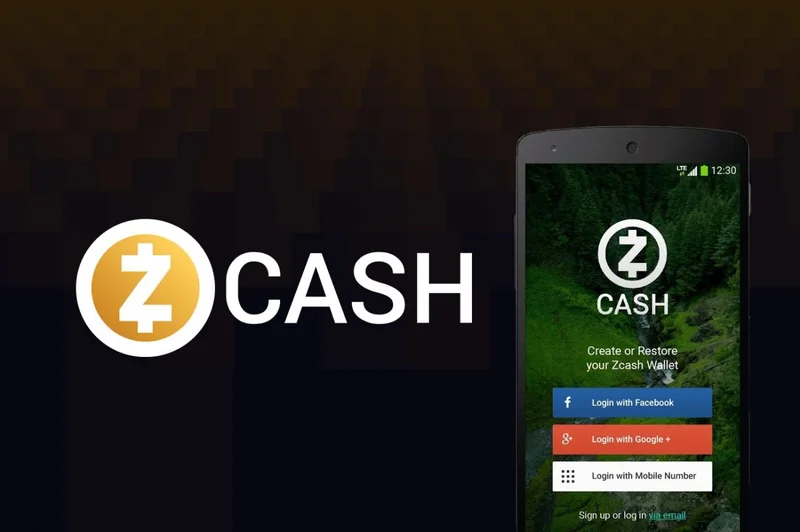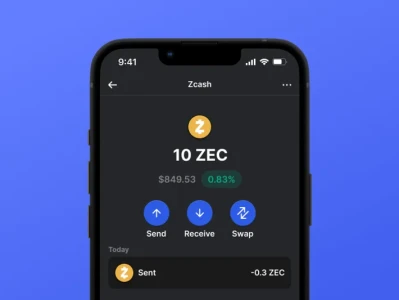The Zcash price surge—a staggering 740% run this year, with a recent daily jump north of 30%—isn't just a blip on the crypto radar; it's a full-blown market phenomenon. And like any rapid ascent in the digital asset space, it's ignited a fierce debate: are we witnessing organic momentum fueled by genuine technological advancement, or is this simply a coordinated, influencer-driven pump? My analysis suggests the truth is far more nuanced, a volatile cocktail of both, served up in a market hungry for the next big thing, even if the data hints at caution.
The Anatomy of a Rally: Data vs. Narrative
Let's start with the hard numbers. Zcash (ZEC) has rocketed from its wilderness years, not just climbing but practically pole-vaulting into the spotlight. At press time, it was trading around $682, having recently pulled back from a peak near $750. This isn't small change, and the velocity of the move has everyone from retail traders to seasoned analysts scrambling for an explanation.
The loudest voices in this debate often come from X, where the battle lines are drawn between those who see a conspiracy of paid endorsements and those who point to fundamentals. Mert Mumtaz, the Helius.dev founder, cut through the noise with characteristic bluntness, mocking the idea of a single "mega-whale" orchestrating a vast paid promotion scheme involving industry titans like Cobie, Naval Ravikant, and the Winklevoss Twins. His argument? People would rather believe in a grand conspiracy than admit they were sidelined by "poor thinking and emotion." It’s a compelling psychological observation, one I find often holds true in these frothy markets.
Mumtaz then laid out his data-driven case for the Zcash crypto resurgence: a more favorable political climate for privacy coins in the US, significant issuance reduction (a critical factor for any asset's long-term value proposition), and a suite of technical upgrades. He highlighted NEAR Intents turning ZEC into a "shielded swiss vault" for one-click cross-chain payments, the vastly improved user experience of the default-shielding Zashi wallet, and the ambitious 100x-scaling goals of Project Tachyon. Add to that the growing disillusionment with an increasingly institutional Bitcoin (BTC), Europe's tightening surveillance, and maturing zero-knowledge tech, and you've got a potent narrative. This combination, he concluded, creates a "fire" that spreads fast without needing a "conspiracy."
Yet, skepticism persists. When a prominent figure like Jordan Fish (@Cobie) engages with Zcash, accusations of him being a "paid shill" inevitably surface. Cobie, however, quickly pushed back, pointing to nearly a decade of interest and, more importantly, recent verifiable developments. He cited Project Tachyon (which promises "oblivious synchronization" to drastically lower latency for shielded transactions), the critical fix to Zcash's "brutal inflation" (a key economic lever), and the functional integration of Zcash + NEAR intents for permissionless cross-chain swaps. These aren't abstract promises; Zcash's engineering roadmap shows a clear progression from experimental cryptography to production-grade systems. The rise in shielded supply, now estimated around 25-30% of total ZEC, further underscores actual user adoption of privacy features.
My methodological critique here is that while we can track on-chain metrics and developmental milestones, quantifying the precise impact of "influencer activity" versus "organic momentum" remains an elusive task. Naval Ravikant's October post, "Bitcoin is insurance against fiat. ZCash is insurance against Bitcoin," was an undeniable catalyst, immediately doubling ZEC's price. This isn't paid promotion in the traditional sense, but it is a powerful amplification of a narrative, compressing years of potential re-rating into mere weeks. It's like watching a carefully cultivated forest catch fire from a single, well-placed spark; the forest was ready, but the spark made all the difference.
The Cypherpunk Conundrum: A Bet on Volatility
The Zcash news isn't confined to the crypto markets. The ripple effects have extended to traditional equity markets, exemplified by the astounding 300% stock jump of Cypherpunk Technologies (CYPH). This former biotech firm, Leap Therapeutics, completed a radical pivot, debuting on Nasdaq with a new focus: a digital asset treasury strategy centered entirely on Zcash cryptocurrency. They raised millions specifically to build ZEC holdings, explicitly citing growing concerns about digital surveillance.

This is where the rubber meets the road, and the data paints a less rosy picture. The timing of Cypherpunk's launch is, to put it mildly, challenging. Bitcoin recently dipped below the $100,000 mark, institutional inflows have weakened, and over $1 billion in leveraged crypto positions were liquidated, pushing market sentiment to "extreme fear" levels (a chilling 15 on the index). Zcash itself has dropped approximately 30% from its recent $750 peak, indicating the volatility inherent even in its rally.
Furthermore, privacy coins like Zcash face intense regulatory scrutiny globally, particularly concerning anti-money laundering (AML) compliance. This isn't a minor hurdle; it's a fundamental impediment to mainstream institutional adoption, which would directly impact Cypherpunk's treasury strategy and potential returns.
Looking at Cypherpunk's financial metrics, the situation appears complex, if not outright precarious. While the company maintains reasonable debt-to-equity ratios and adequate liquidity, returns on assets and equity remain deeply negative. Revenue has declined over both three and five-year periods—to be precise, across its last six reported quarters. Pretax profit margins show large losses, and operating cash flow is in a deficit. Investment in research and development is a significant expense, pointing to long-term product development, but this does little to assuage immediate profitability concerns. I've looked at hundreds of these filings, and the dissonance between market enthusiasm for the pivot and the underlying financial metrics here is genuinely striking.
Wall Street analysts, typically more grounded in traditional valuation models, have assigned CYPH a cautious "Hold" rating with a $1.25 price target, implying a potential downside of 30% from current levels. This suggests they question the sustainability of the post-transformation rally, weighing the weak crypto market and regulatory uncertainties heavily. The Cypherpunk story isn't just an anecdote; it's a stark illustration of how quickly speculative fervor can override fundamental financial health when a compelling narrative takes hold. It's like building a grand, ornate mansion on shifting sands; the structure might look impressive for a moment, but the foundation is inherently unstable.
The Road Ahead: Speculation and Support
The immediate future for ZEC hinges on a critical development: the upcoming launch of shielded transactions on the Zashi Wallet next week. This feature, powered by Near Intents, will allow users to privately swap other cryptocurrencies into shielded ZEC. The market is clearly anticipating this, driving aggressive buying in both spot and futures markets, with a Long Short Ratio of 1.04 indicating a strong bullish bias. However, even this isn't without its critics, with on-chain monitor ZachXBT warning about potential leakage from using Zcash transparent addresses for refunds.
Technically, Zcash needs to break above the $750 resistance to target $875. If momentum falters, the 18-day moving average near $495 is the likely support level. Beyond the immediate price targets, how sustainable is a rally built primarily on anticipated feature releases rather than widespread, demonstrable utility? That's the million-dollar question for any ZEC investor.
The Numbers Demand a Reality Check
Zcash's rally is a fascinating case study in market psychology, technological potential, and speculative excess. While genuine advancements in privacy tech and a more favorable narrative environment provide a fundamental underpinning, the sheer speed of the price movement, amplified by influential voices, and the dubious financial health of companies like Cypherpunk Technologies betting their entire future on ZEC, scream caution. The confluence of extreme market fear in Bitcoin and a 30% pullback in ZEC from its peak suggests that even the most fervent narrative can't entirely escape gravity. Investors would be wise to scrutinize the data, not just the headlines.



